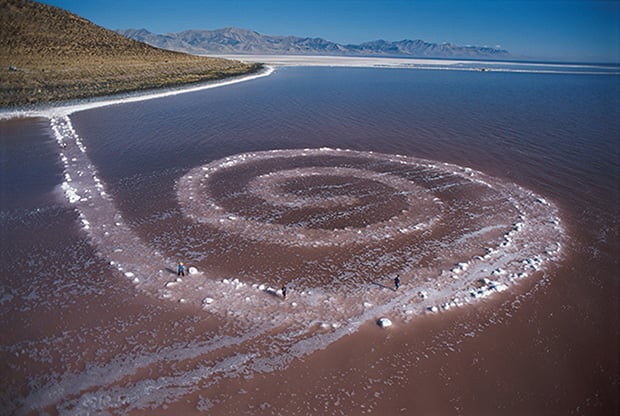Art World
Robert Smithson’s Spiral Jetty Faces Most Serious Drought in History
There's concern that the lake is shrinking.

There's concern that the lake is shrinking.

Christie Chu

The Great Salt Lake in Utah, which houses Robert Smithson’s famous land work, Spiral Jetty, is facing the most critical drought in history.
Water is dropping south of the lake’s historic low, set in 1963. According to a story by the Salt Lake Tribune, reported in February, the lake level was at an all-time low at 4,193.8 feet and “many observers expect it to dip to a new historic low within the year, depending on precipitation this winter.”
Smithson’s Spiral Jetty is a 1,500-foot-long work created in 1970 during a drought and subsequently was submerged for more than three decades before resurfacing in 2002. As a result of the new record lows, the winding basalt rocks are perhaps more exposed than ever before.
The consensus among the three organizations that oversee the work—the Dia Art Foundation, the Great Salt Lake Institute, and the Utah Museum of Fine Arts—is that there is no need to take action in order to protect it.
Although there is “concern from an ecological point of view that the lake is shrinking,” the director of the Great Salt Lake Institute, Bonnie Baxter, told the Art Newspaper, “The current thinking by most is that Robert Smithson would have loved to see the environmental changes that occur around his artwork, so there is no real talk of intervention.”
Smithson chose the north arm of the lake to place his work since the water levels are lower and the water’s hue is a crystal pink.
Other famous earth works by Smithson include Broken Circle (1971) in the Netherlands, Amarillo Ramp (1973) in Texas, and Asphalt Run (1969) in Italy. Smithson died in a plane crash in 1973 at the age of 35.